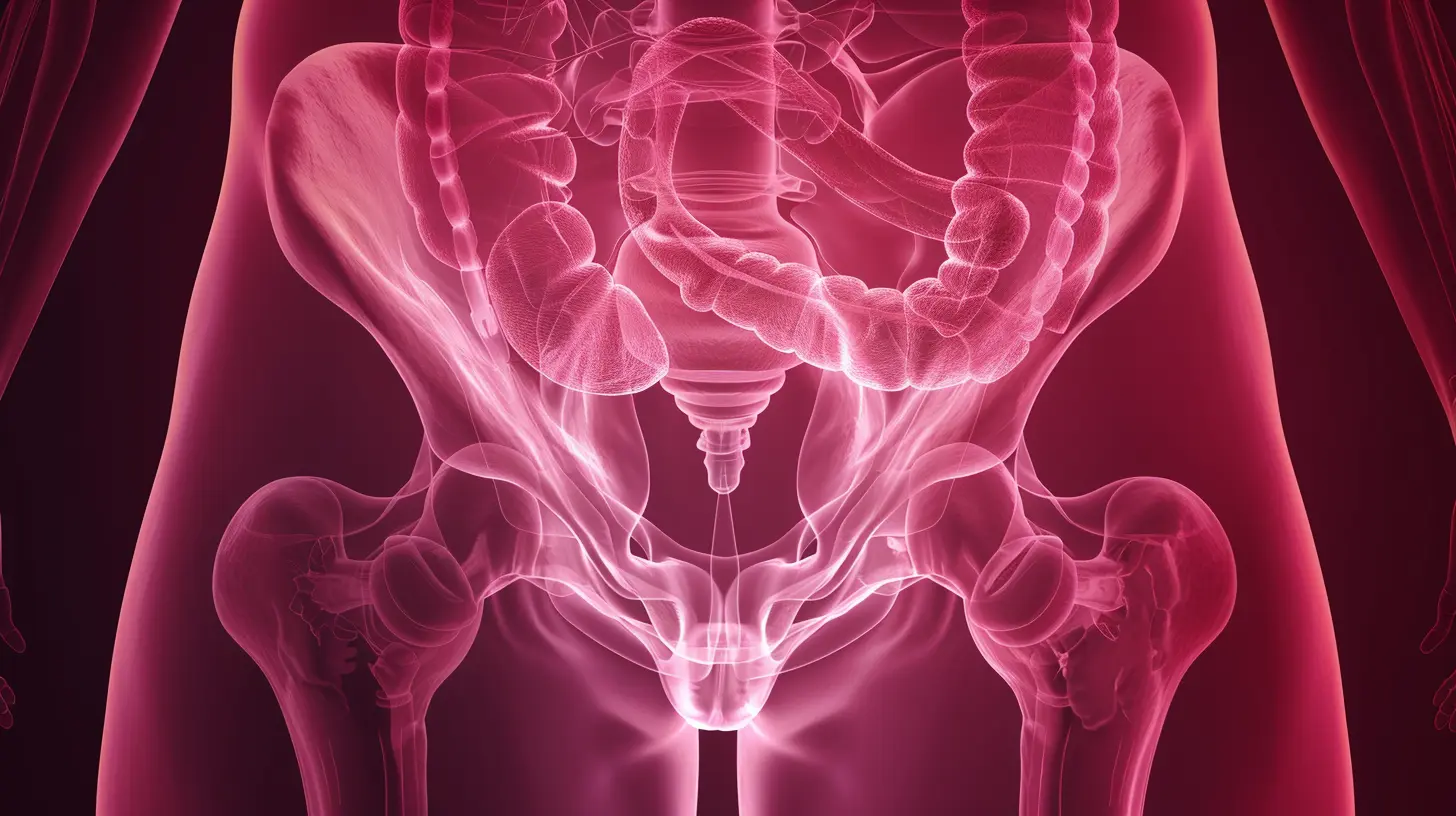Reclaiming Your Pelvic Floor Health After Birth
31 August 2025
Let’s be real—childbirth is an amazing feat. Your body literally brings a tiny human into the world. That’s superhero-level stuff! But after the adrenaline fades and the baby giggles start rolling in, there’s one area that often gets swept under the rug: your pelvic floor.
If you’ve given birth (vaginally or via C-section), chances are your pelvic floor took a hit. Maybe you’re leaking when you laugh, sneeze, or run. Maybe sex doesn’t feel quite right. Or maybe you’re experiencing lower back pain that just won’t quit.
Whatever it is, you’re not alone—and you don’t have to live with it. This is your guide to reclaiming your pelvic floor health after birth, plain and simple.
What’s the Pelvic Floor, Anyway?
Let’s start with the basics. Your pelvic floor is a group of muscles, ligaments, and tissues that act like a sling to support your bladder, uterus, and rectum. Think of it like a hammock holding everything in place.During pregnancy and childbirth, these muscles stretch—a lot. Especially during a vaginal birth, your pelvic floor can be strained, torn, or weakened. But even a C-section doesn’t let you off the hook. The weight of the baby and hormonal changes still affect these muscles.
Bottom line? No matter how you gave birth, your pelvic floor might need a little TLC.
Why Pelvic Floor Health Matters Postpartum
You might be thinking, "Okay, so what if my pelvic floor is a bit weak?" Well, it matters more than you’d think. Here’s why:1. Say Goodbye to Leaks
Ever laughed too hard and peed a little? That’s stress incontinence, and it’s super common postpartum. A strong pelvic floor helps you regain control.2. Improve Sexual Function
Yup, a healthy pelvic floor equals better sex. These muscles play a huge role in arousal and orgasm. So, if things feel different (or dull) post-baby, your pelvic floor might be the key.3. Prevent Prolapse
Pelvic organ prolapse is when organs like the bladder or uterus drop because the pelvic floor isn’t holding them up properly. It can feel like pressure or heaviness down there—and it’s no fun.4. Support Your Core
Your pelvic floor is part of your core. When it’s strong, it helps stabilize your spine, improve posture, and reduce lower back pain.
Signs Your Pelvic Floor Needs Help
Wondering if your pelvic floor is struggling? Here are some tell-tale signs:- Leaking urine when coughing, sneezing, or jumping
- A heavy or dragging sensation in your vagina
- Pain during sex
- Trouble fully emptying your bladder
- Lower back or pelvic pain
- Gas or stool leakage (yep, it happens)
If you're saying "yes" to one or more of these, your pelvic floor is calling for some attention.
Rest, Recovery, and Realistic Expectations
Before you start imagining intense workouts or complicated routines, let’s pause. Just like you wouldn’t go run a marathon right after surgery, you shouldn’t push your body too hard postpartum. Healing takes time.In the first six weeks after giving birth, your body is in recovery mode. Focus on rest, hydration, gentle movement, and bonding with your baby. Let your pelvic floor begin the healing process naturally. You’ve already done a huge job—give yourself grace.
When to Start Pelvic Floor Exercises
The beauty of pelvic floor healing? You can start small. Some women begin gentle pelvic floor exercises (like Kegels) just days after birth—as long as they feel comfortable and aren’t in pain.The key is to listen to your body. If something feels off or painful, stop. There’s no race. Even a few mindful squeezes a day can make an impact over time.
Pelvic Floor Exercises that Actually Work
Okay, let’s get to the good stuff. What can you do to help your pelvic floor bounce back?1. Kegels (The OG)
Kegels are the go-to pelvic floor exercise. Here’s how to do them right:- Imagine you’re trying to stop the flow of urine midstream.
- Squeeze those muscles and hold for 3-5 seconds.
- Relax for the same amount of time.
- Repeat 10 times, 3-4 times a day.
Pro tip: Don’t actually do Kegels while peeing—just use that feeling as a guide. And remember, it’s about quality, not quantity.
2. Elevator Exercise
Think of your pelvic floor as an elevator moving floor to floor.- Gently contract your pelvic floor muscles to 25%, pause.
- Increase to 50%, then 75%, and finally 100%.
- Then reverse on the way down.
This is a great way to build mind-muscle connection.
3. Bridge with a Squeeze
Adding a pelvic floor squeeze to a glute bridge? Total game-changer.- Lie on your back with knees bent.
- Squeeze your pelvic floor, then lift your hips.
- Hold for a few seconds, then lower slowly.
- Do 10-12 reps.
You’ll work your core, glutes, and pelvic floor all at once.
4. Deep Belly Breathing
It’s not just “woo-woo” stuff. Diaphragmatic breathing helps reset your core and relieve pressure on your pelvic floor.- Sit or lie down comfortably.
- Inhale deeply so your belly rises.
- Exhale slowly while gently engaging your pelvic floor.
- Repeat for several breaths.
What About Pelvic Floor Physical Therapy?
Here’s a truth bomb: you don’t have to figure this out alone. Pelvic floor physical therapists are the unsung heroes of postpartum recovery.They can:
- Evaluate muscle strength and function
- Create a personalized recovery plan
- Use tools like biofeedback to improve results
Whatever your issue—weakness, tightness, pain, or confusion—they’ve got your back (or your bottom, rather).
If you’re struggling or just want to make sure you’re doing things right, book an appointment. It’s a total game-changer.
Other Ways to Support Pelvic Floor Healing
Exercise isn’t the only piece of the puzzle. Here are a few other things you can do to support healing:1. Hydrate Like a Boss
Dehydration can mess with bowel movements, which puts pressure on the pelvic floor. Water is your best friend.2. Eat Fiber-Rich Foods
Constipation is not your pelvic floor’s friend. Fill your plate with fruits, veggies, and whole grains to keep things moving.3. Watch Your Posture
Slumping forward? You’re putting unnecessary strain on your pelvic floor. Sit up tall, and keep your shoulders relaxed.4. Avoid Heavy Lifting Too Soon
Lifting a toddler when you haven’t healed? Recipe for setbacks. Be mindful and ask for help when you need it.Common Myths About Pelvic Floor Recovery
Let’s bust a few myths while we’re at it:Myth 1: “Leaking after birth is just part of motherhood.”
Wrong. It’s common—but it’s not normal. You don’t have to live with it.Myth 2: “C-section moms don’t need to worry about pelvic floor health.”
Wrong again. Pregnancy alone weakens the pelvic floor, and you’re not immune just because you skipped vaginal delivery.Myth 3: “I can fix it with a few Kegels.”
It’s not always that simple. The pelvic floor is complex, and too many Kegels (especially done wrong) can do more harm than good.When to Talk to a Doctor
If your symptoms don’t improve after a few months, or if you're dealing with pain, heaviness, or incontinence that disrupts daily life—check in with your healthcare provider. There’s absolutely no shame in asking for help.A Note to Every Mom Out There
Mama, you’ve been through a lot. Whether you had the birth experience of your dreams or a tough-as-nails delivery, your body deserves care, patience, and respect.Reclaiming your pelvic floor health isn’t about bouncing back. It’s about moving forward—stronger, more aware, and more connected than ever before.
You’ve already created life. Now it’s time to honor your own.
Final Thoughts
Reclaiming your pelvic floor health after birth isn't a one-size-fits-all journey. It’s about tuning in, taking small steps, and giving yourself love along the way. With the right knowledge, support, and consistency, you can feel strong, confident, and in control again—down there and everywhere else.So start today. A few minutes of mindful breathing, a Kegel here and there—your future self (and your sneeze reflex) will thank you.
all images in this post were generated using AI tools
Category:
Postpartum RecoveryAuthor:

Kelly Snow
Discussion
rate this article
1 comments
Greta McFarlin
Unlock the secrets to reclaiming strength where it matters most—your journey begins here.
September 9, 2025 at 4:03 PM

Kelly Snow
Thank you! Excited to share valuable insights on reclaiming pelvic floor health after birth. Let's empower your journey together!


